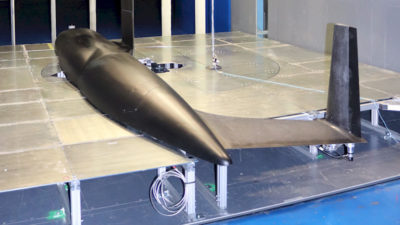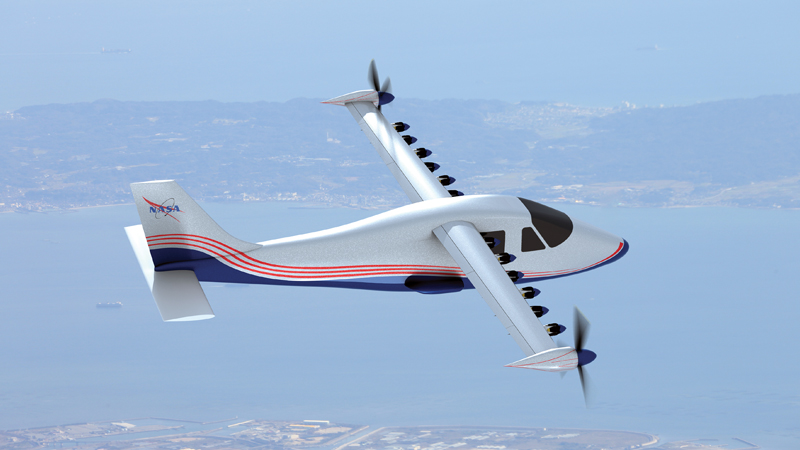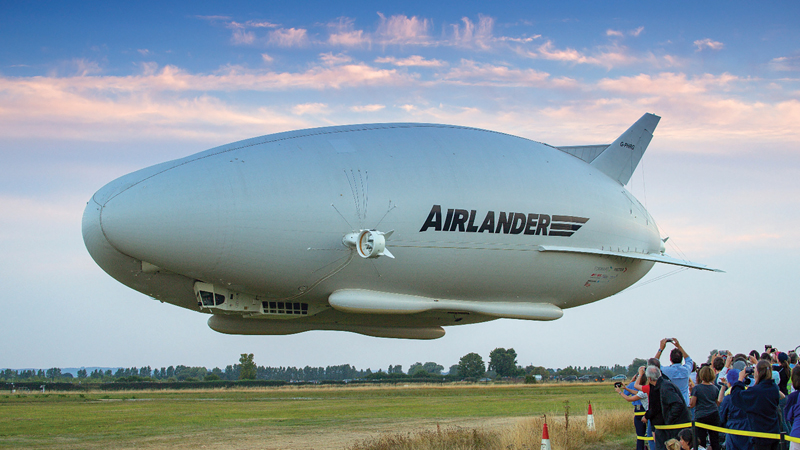Space nuclear propulsion collaborations prepare to take flight
By Bryan Palaszewski, Stephanie Thomas and Kurt Polzin|December 2023
The Nuclear and Future Flight Propulsion Technical Committee works to advance the implementation and design of nonchemical, high-energy propulsion systems other than electric thruster systems.
In January, NASA Administrator Bill Nelson announced a collaboration with DARPA on a nuclear thermal rocket. The exhaust velocity of nuclear thermal propulsion, or NTP, is approximately twice that of the best conventional chemical rocket engines, which could reduce the transit time of long-duration flights to destinations including Mars. Under the DRACO program, short for Demonstration Rocket for Agile Cislunar Operations, NASA will lead development of an engine in which liquid hydrogen will be heated by a reactor to propel the spacecraft. In July, DARPA announced Lockheed Martin would design and build the demonstration spacecraft, with Virginia-based BWX Technologies developing and fabricating the nuclear reactor. Plans call for an in-space demonstration by 2027, in which a conventional rocket would launch the DRACO spacecraft to a high orbit before the reactor is activated. This high altitude minimizes the risk of the spacecraft entering the atmosphere. Also, the reactor is to be fueled with high-assay low-enriched uranium, which contains lower levels of the uranium 235 isotope than weapons-grade uranium.
NASA also continued to mature NTP components and systems through its Space Nuclear Propulsion project. Development and testing continued of ceramic-metallic, ceramic-ceramic, solid-solution nuclear fuels and other materials for nuclear reactors at NASA’s Marshall Space Flight Center in Alabama, NASA’s Glenn Research Center in Ohio, various U.S. Department of Energy national laboratories and the MIT nuclear reactor facility. NASA and the Department of Energy awarded California-based General Atomics and Ultra Safe Nuclear Corp. of Washington additional funding for NTP reactor concepts, work that began under initial contracts awarded in 2021. The extensions are to fund activities including manufacturing demonstrations and hardware test and evaluation, targeted for late this year and early 2024.
Also under the Space Nuclear Propulsion project, Virginia-based Analytical Mechanics Associates in January analyzed megawatt radiators for nuclear electric propulsion. These winglike structures collect heat from reactors and direct that heat into space. No fission or fusion engine is 100% efficient, meaning there will always be waste heat to control. The radiator modeling included numerous parameters and analyzed designs larger and more powerful than 100 kilowatts, which will be required for large nuclear-powered spacecraft planned to transport cargo and humans to deep space.
In September, the Air Force Research Laboratory awarded three contracts under its Joint Emergent Technology Supplying On-Orbit Nuclear Power, or JETSON, project, which aims to build a prototype of a fission reactor that could power a spacecraft in an in-flight demonstration. Intuitive Machines of Texas received $9.4 million to design a spacecraft with a “radioisotope power system, electric and/or hybrid propulsion,” according to a Defense Department contract announcement. Lockheed Martin received $33.7 million to mature the design of a JETSON spacecraft and “fully develop the overall program development and test program planning through critical design review.” Westinghouse Government Services of South Carolina received $16.9 million to study how a fission reactor “could be implemented from a subsystem, spacecraft, and architecture standpoint.”
In June, Princeton Satellite Systems of New Jersey and U.K. propulsion company Pulsar Fusion announced a collaboration to apply machine learning to the Princeton-field reversed configuration experiment at the Princeton Plasma Physics Laboratory, the basis for Princeton Satellite Systems’ Direct Fusion Drive rocket and reactor concept. Researchers will analyze stabilization methods of the plasma under electromagnetic heating and confinement as relevant to future aneutronic fusion propulsion. In the proposed design, a nuclear reactor would fuse hydrogen and helium atoms, generating energy that heats a hydrogen propellant to create thrust. The researchers estimate this fusion engine would generate exhaust with a velocity between 10 to 100 times greater than conventional chemical rocket engines. Princeton Satellite Systems has been developing this technology with the laboratory since 2011.



































